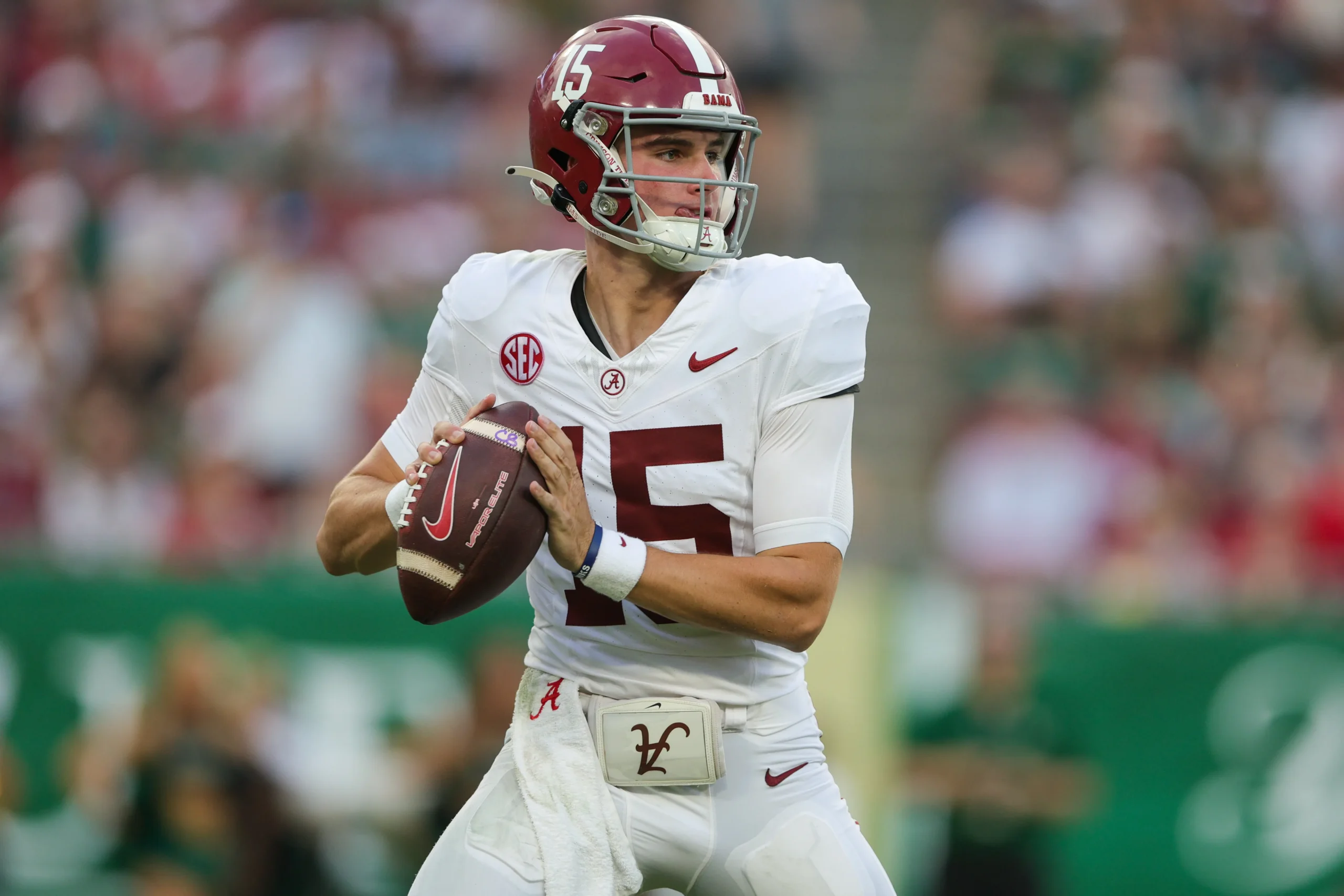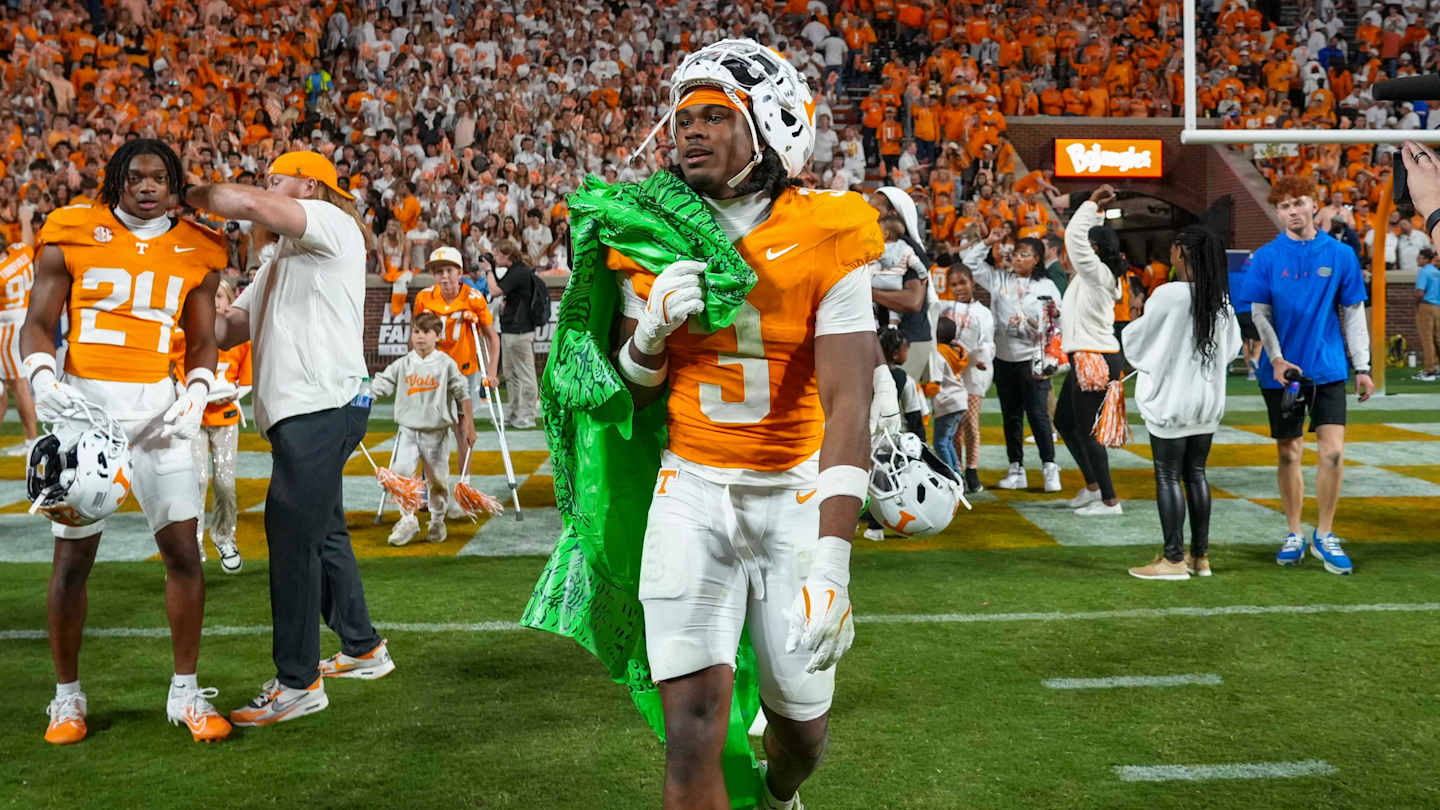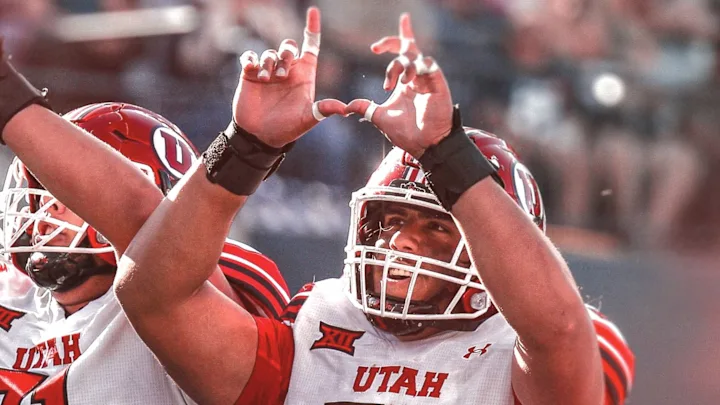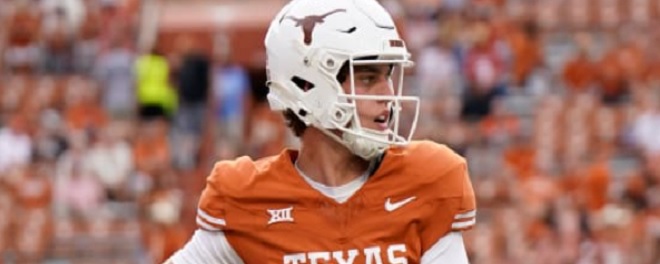By Charlie Campbell.
Send Charlie an e-mail here: [email protected]
Follow Charlie on Twitter @draftcampbell for updates.
This page was last updated March 31, 2017. Follow me @walterfootball for updates.
Position Review: Centers
Center Class
Early-round talent: C+
Mid-round: C
Late-round: C-
Overall grade: C
2017 prospects vs 2016
Ryan Kelly
Forrest Lamp
Nick Martin
Cody Whitehair
Ethan Pocic
Max Tuerk
Isaac Seamalo
Graham Glasgow
Jon Toth
Pat Elflein
Evan Boehm
Kyle Fuller
Tyler Orlosky
Isaac Asiata
Joey Hunt
J.J. Dielman
I’m doing something a bit unorthodox in this position review by including Forrest Lamp. Last year, I didn’t have Whitehair in the center review, but he ended up playing that position as a rookie for Chicago. Similar to Whitehair, I think Lamp could end up being a center in the NFL, and that could be Lamp’s best fit as a pro. Thus, I will include Lamp and I think it make for a more interesting comparison rather than another late-round prospect.
This year’s draft class is neither as deep of a group of centers as 2016, nor does it feature a top-shelf prospect like last year’s did with Ryan Kelly. Kelly was a top-20 pick, and this year’s center class would not have a candidate for Thursday night if Lamp weren’t included. Lamp could be the only interior blocker who has a shot of being a first-round pick.
If you were to mix the classes, Kelly would be the first one selected. Lamp could go in the No. 20-40 range. Martin and Whitehair were solid second-round picks who will be good pros. Pocic is about equal to Tuerk as a third-round prospect. Toth and Elflein would be behind Glasgow as late third-round candidates as they are about equal with Boehm, who went in Round 4. Fuller, Orlosky and Asiata are all above the sixth-rounder Hunt. Dielman could be a sixth- or seventh-rounder.
Safest Pick: Forrest Lamp, Western Kentucky

I think Lamp is a very safe pick to become a good center in the NFL. He was rock solid for Western Kentucky over the past few seasons at left tackle. He has the quick feet, athleticism, and strength to be a plus center from an athletic standpoint. Moving inside would also hide his lack of length, which could be a real problem for him blocking on the edge. Lamp isn’t a bulldozing power blocker, but at center, he would have quality strength for that position and could be very effective double-teaming with guards to push defenders out of their gap. Lamp could be a great fit as a center.
Looking at the past seasons is a mixed bag. Martin had won a starting job and was getting a lot of praise before a season-ending injury. I bet he turns into a good pro center. Cam Erving is nearing bust status, while Barrett Jones didn’t pan out for the Rams. Those two were clearly wrong. Richburg has turned into a quality pro.
2016: Nick Martin
2015: Cam Erving
2014: Weston Richburg
2013: Barrett Jones
Biggest Bust Potential: Pat Elflein, Ohio State

This was a tough choice, but I went with Elflein because he could be a mid-round pick and I see some issues that could keep him from panning out. At 6-foot-3, 303 pounds, Elflein is a little undersized for the NFL. He lacks length and quickness for taking on fast interior linemen. I thought Elflein played better and was more impressive as a junior. He didn’t seem as good as a senior, and it wouldn’t surprise me if he doesn’t translate to the NFL.
Allen went undrafted, so he really isn’t a bust. Grasu spent his second season on injured reserve, so the jury is still out on him. Marcus Martin was a bust as the 49ers cut him after taking him in the third round of the 2014 NFL Draft. I’m definitely happy to be accountable and say that I completely blew this projection in 2013 with Frederick. He is one of the best centers in the NFL. At least I prefaced it by saying at worst he would be a solid guard.
2016: Jack Allen
2015: Hroniss Grasu
2014: Marcus Martin
2013: Travis Fredrick
Center Rankings by Attributes
Pass Protection:
NFL prototype: Rodney Hudson, Raiders
- Forrest Lamp
- Ethan Pocic
- Jon Toth
- Kyle Fuller
- Tyler Orlosky
- Pat Elflein
- Isaac Asiata
- J.J. Dielman
Recap: The NFL is all about the passing offense, so centers must be be an asset at protecting the quarterback and helping to keep a clean pocket. Centers need to be able to stop interior blitzes, bull rushes from heavy nose tackles, speed rushes from three-techniques and double teams effectively. Fortunately for teams needing a center, this year’s class has some good pass-blockers.
I think Lamp is the best pass protector of this group and his skill set translates the best to the NFL. He has good hand placement and excellent knee bend. Lamp also plays with good leverage and doesn’t get caught reaching after defenders. His knee bend helps him to hold his ground, while his hand placement helps him to sustain blocks. Lamp has quality feet to slide and mirror while also getting to the second level in the ground game. He is a well-balanced blocker who was effective in college in both phases. As an interior lineman, Lamp should be a real asset in pass protection.
Pocic was a good protector for LSU and got better over the past few seasons. He is smart to set the line well and pick up interior blitzes. Pocic could use more strength to handle the heavy nose tackles who he’ll battle against, especially from 3-4 defenses.
Toth and Fuller were very reliable pass protectors in college. They both have good size with some length. They are strong enough in their bases to hold up against the heavy nose tackles from 3-4 schemes.
Elflein (6-3, 303) and Orlosky (6-3, 298) are smart technicians, but both are bit undersized. Lamp is actually similar in size to these two, but he has more natural strength to him. Elflein could struggle with speed on the inside, while Orlosky could have problems with heavy nose tackles. Asiata and Dielman are going to need to work on blocking speed rushers in the NFL, but they have the size and strength to handle strong nose tackles.
Run Blocking:
NFL prototype: Travis Frederick, Cowboys
- Isaac Asiata
- Forrest Lamp
- Jon Toth
- Pat Elflein
- Ethan Pocic
- Kyle Fuller
- J.J. Dielman
- Tyler Orlosky
Recap: Joe Williams had a lot of success running behind Asiata and Garet Bolles last year. Asiata has strength to him to help get a push on defensive linemen and open holes on the ground.
In the ground game, Lamp gets to the spot, executes his blocks well, and is able to get the job done. He isn’t a true bull dozer who blasts defenders off the line, but he can turn linemen to open holes. Lamp also is good at cutting defenders. He would be a great fit in a zone-blocking scheme at center. In a power-man scheme, he probably would be excellent adding to double teams.
Toth is a tough blocker at the point of attack and opened a lot of holes for Kentucky the past few seasons. He is a strong technician. His run blocking is a strength.
Elflein isn’t as big as some of these other centers, but he is a tough run blocker and did a nice job of opening holes. Elflein packs a punch at the point of attack.
Pocic was a tough run-blocker for LSU over the past few seasons. He has enough strength to move linemen and showed nice quickness and agility to get to blocks on defenders at the second level. Pocic is a smart technician with how he executes.
Fuller is decent in the ground game. Dielman was a solid run blocker for the Utes before his season-ending injury in 2016. Orlosky could use more strength for the NFL, but his frame looks about maxed out. He could be a solid center, but won’t ever be a player who generates a lot of movement.
Speed:
NFL prototype: Maurkice Pouncey, Steelers
- Forrest Lamp
- Ethan Pocic
- Kyle Fuller
- Jon Toth
- Tyler Orlosky
- J.J. Dielman
- Pat Elflein
- Isaac Asiata
Recap: Lamp is the fastest of these linemen. He moves really well at the point of attack. Pocic and Fuller are both very quick off the snap and are able to pull well. All three of those centers are quick to hit blocks on the second level.
Toth is a center with sneaky quickness, and moves well to the second level. Orlosky and Dielman have underrated quickness. They both move well for their size. Elflein and Asiata aren’t very quick.
Strength:
NFL prototype: Travis Frederick, Cowboys
- Isaac Asiata
- Jon Toth
- Pat Elflein
- Forrest Lamp
- J.J. Dielman
- Ethan Pocic
- Tyler Orlosky
- Kyle Fuller
Recap: Asiata is the strongest lineman of the group as he can can push defensive linemen around, which allowed him to be a tough guard for the Utes. Toth and Elflein pack a nice punch when they hit a defender at the line of scrimmage or on the second level. They have quality power for playing center.
Lamp is strong for his size with some natural strength. He has a barrel chest with big arms, but his frame is maxed out. Lamp wouldn’t have power as a tackle or guard, but at center, he is stronger than average.
Dielman and Pocic are each strong for their size. They aren’t overly powerful, but they’ve developed some strength in their base.
Orlosky and Fuller need to get stronger for the NFL. None of them has the power on their own to move strong NFL defensive tackles. However, they are well-rounded blockers otherwise.
Zone Blocking:
NFL prototype: Alex Mack, Falcons
- Forrest Lamp
- Ethan Pocic
- Jon Toth
- Tyler Orlosky
- Kyle Fuller
- J.J. Dielman
- Isaac Asiata
- Pat Elflein
Recap: Lamp is the best fit as a zone-blocking center in the NFL. He is agile, quick and athletic, which makes him a perfect fit to be part of the moving wall of a zone-blocking scheme.
Pocic ran some zone in college. He will be a good fit for the system in the NFL as he has the quickness, athleticism and intelligence to thrive. Toth would probably fit a zone scheme better as he is a mobile athlete. Orlosky showed nice quickness at the Senior Bowl and could execute a zone scheme.
Fuller and Dielman have the skills to execute a zone scheme. Asiata and Elflein are probably better fits for for man as they aren’t most quick or athletic interior blockers.
Power-Man Blocker:
NFL prototype: Travis Frederick, Cowboys
- Jon Toth
- Ethan Pocic
- Isaac Asiata
- Pat Elflein
- Forrest Lamp
- J.J. Dielman
- Kyle Fuller
- Tyler Orlosky
Recap: Toth and Pocic are both good fits for a man-blocking scheme. They both can push defenders at the point of attack with power and strength. Each one also ran a lot of power-man in college. Both Asiata and Elflein are strong and pack some punch. Teams that run power schemes should like them.
Lamp has enough strength for center in a power-man blocking scheme. Dielman and Fuller would be able to play in a power-man scheme, too. If drafted by a man team, Orlosky would be a developmental project and could be a backup for a time before he’s ready to compete in that scheme.
Versatility:
NFL prototype: Mike Pouncey, Dolphins
- Forrest Lamp
- Isaac Asiata
- Jon Toth
- J.J. Dielman
- Ethan Pocic
- Kyle Fuller
- Pat Elflein
- Tyler Orlosky
Recap: NFL offensive line coaches like their interior linemen to have the ability to play guard or center. Young players who are fighting to make the team as a backup help themselves by having flexibility on the inside. On game days, teams need interior linemen who can play guard or center.
Lamp projects as the most versatile blocker of this group. He could be a starter at guard or center. With his left tackle experience, he could move to the edge in a pinch if injuries ravage his line during a game.
Asiata, Toth, Dielman and Pocic have enough size to be considered guards as well as centers. Asiata could remain a starter at guard in the NFL, thus he’s rated second.
Fuller, Elflein and Orlosky should be centers only in the NFL.
NFL Picks - Dec. 20
NFL Power Rankings - Dec. 17
2026 NFL Mock Draft - Dec. 17
Fantasy Football Rankings - Sept. 1




